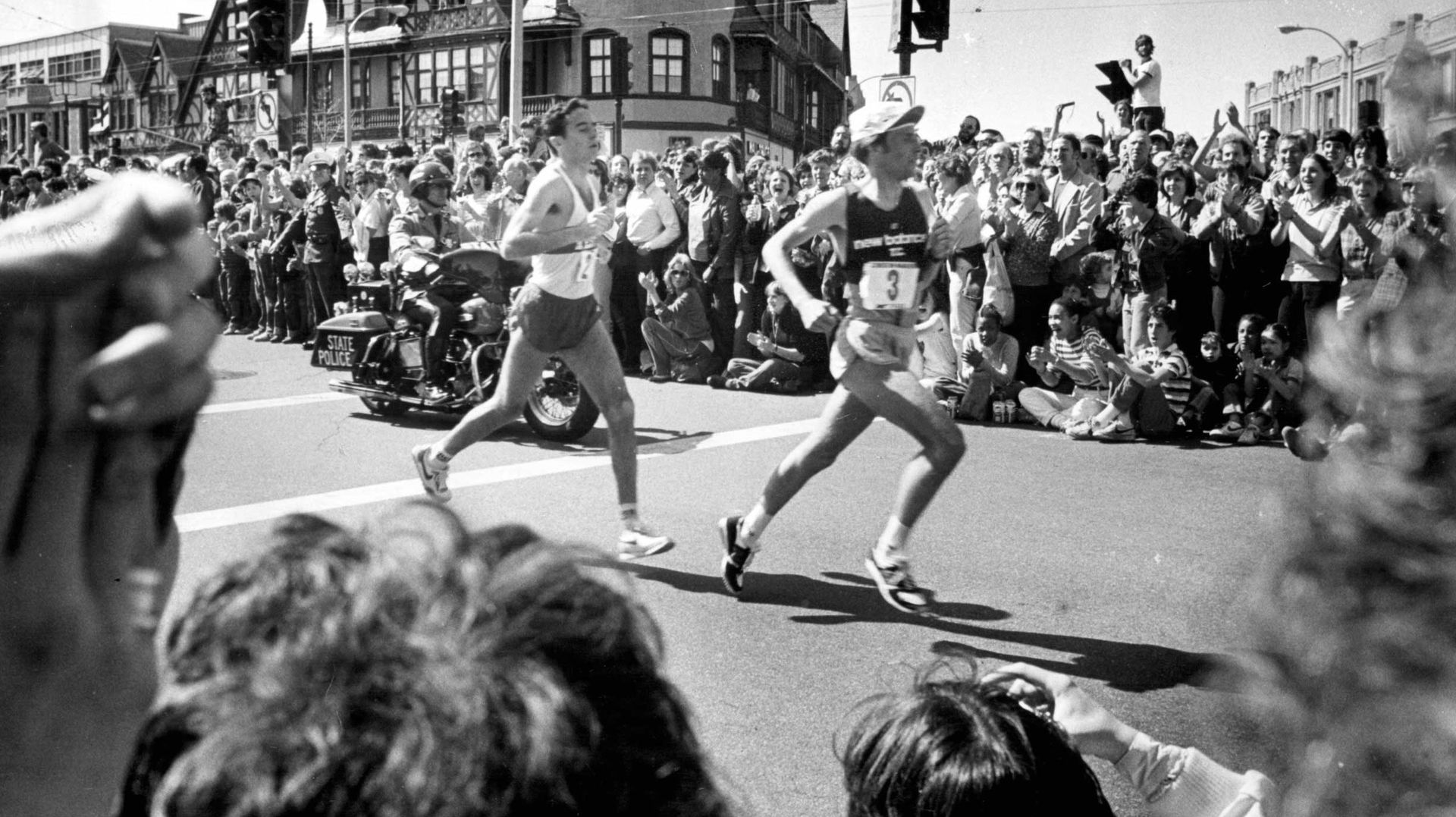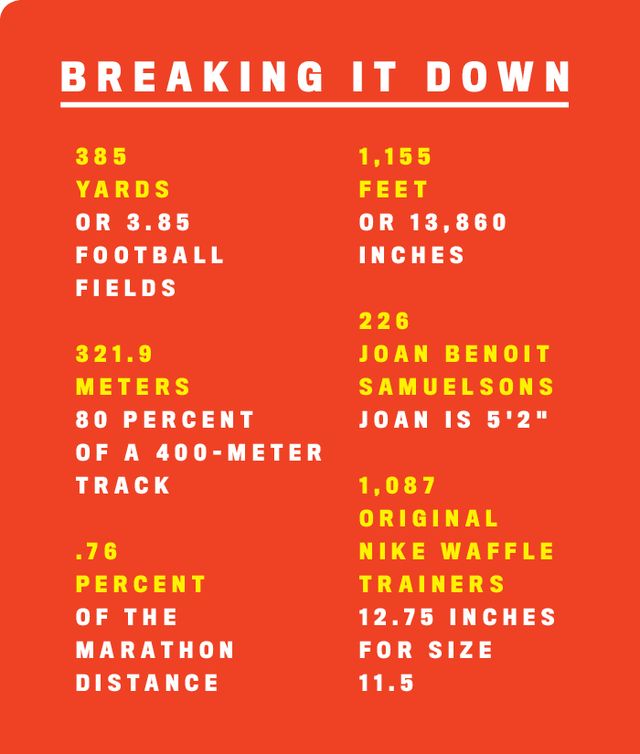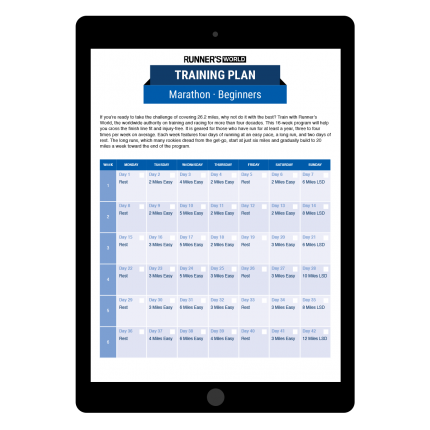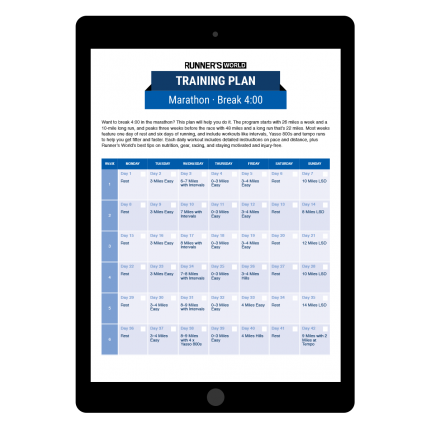If you’ve been a runner for any amount of time, you’ve probably gotten this question from an inquisitive friend or coworker: “How long is a marathon again?"
It may seem petty—arrogant, even—to point out to the ill-informed exactly how long a marathon is. As many know, it is not just 26 miles.
There’s that pesky point-freaking-two—385 yards with inestimable importance. In those final moments, races are won and lost, Boston-qualifying dreams come true (or die). The realization that you did it happens, but you still have .2 to go.
“It hurts everywhere if you’ve done it right,” says Des Linden, the 2018 Boston Marathon champion. “And if you’ve done it wrong, you’re suffering. Either way, it hurts.”
Go back to Boston 2011, before Linden became a champion in Boston. She turns onto Boylston Street with two other women. The finish is so close, and she surges, taking the lead. Kenya’s Caroline Kilel responds, matching her stride for stride. With a little less than 385 yards to go, Linden is just barely ahead before Kilel pulls forward. It becomes a mad dash to the finish, Kilel’s gap widens, and Linden finishes behind her by just two seconds.
“How much of a procrastinator are you to have to sprint to the finish of a 26.2-mile race?” Linden says. “It’s not over until you cross the line.”
That final stretch is a stage showcasing elation, defeat, triumph. Take Paul Tergat and Hendrick Ramaala at the 2005 New York City Marathon, roaring down the final stretch in a battle that put Tergat ahead by one-third—one-third!—of a second and left Ramaala fallen, collapsed across the line.
Or in 1984, at the first women’s Olympic Marathon in L.A. when Gabriela Andersen-Schiess staggered into the stadium 20 minutes behind the first-place finisher, her legs like concrete, suffering from the 86-degree heat, 95-percent humidity, and direct sun. She waved paramedics off and lurched down the track with little control of her extremities for the final .2, the crowd cheering each agonizing stomp until she reached the end.
Then there’s Shalane Flanagan’s New York City win in 2017 when, with 20 yards to go, she raised her fist and screamed, “F--- yeah!”
So when considering how we got to how long a marathon is currently, you want to know where this curse-worthy, exhilarating .2 came from. In the 1908 London Olympics, the marathon started at Windsor Castle and finished in the White City stadium, measuring 26 miles.
Until that point, the marathon distance was roughly 24 miles, inspired by the ancient route run by Pheidippides. But the royal family wanted the runners to finish directly in front of their viewing box, which added on 385 yards. For years, the marathon distance varied from 24 to 26.2 miles, but in 1921, for no recorded reason, twenty-six-point-two became official, and we just have to deal with it.
“When it gets down to the .2, there are some runners who say, ‘I made it. I’m here.’ And they just float to the finish line,” says Stephen Walker, Ph.D., a sports psychologist who works with Olympic marathoners. “And then there are those who are wondering whether they’re going to make it. They hit the .2 and think, ‘My God, I cannot go on. No, this is my last step.’”
Even with no steps to go, legs buckling beneath them, some will do anything to make it, like Devon Bieling at the 2017 Tunnel Vision Marathon. Trying to BQ, she stopped, dropped in a controlled manner and rolled—yes, rolled—through the line in 3:34:02—58 seconds under her qualifying standard.
It’s a complicated feeling, reaching that 26-mile mark. It’s elation when it's approaching, knowing you only have .2 to go. But the final meters grind. They seem endless, a stretch of road that tests your every mental and physical capacity. Only the race you run that day can dictate if you’ll surge or flop, sprint or fall. But once you get there, don’t be shy: raise your arms in triumph or cry out in pain. This is the moment you’ve trained for—the final stretch, the end.
How Long Is a Marathon—And How Do I Train for One?
Now that you know how long a marathon is, you’re probably wondering how to get ready for your next (or first) marathon. Whether you’re a seasoned runner or new to the roads, one thing is true: It takes time to properly train for a marathon. Runner’s World recommends 16 weeks to train for a marathon. (And having a training base before your start on your race journey is very helpful.)
To help you get to your finish line healthy and injury-free, we offer 16-week marathon training plans. All of our plans were designed to help out all runner from beginners to advanced. Several were created to help runners hit specific time goals, such as breaking 4 hours in the marathon or 2 hours in the half marathon. And if you’re a Runner’s World+ Member, you get your training plans for free (along with many other member perks).
Heather is the former food and nutrition editor for Runner’s World, the author of The Runner’s World Vegetarian Cookbook, and a seven-time marathoner with a best of 3:31—but she is most proud of her 1:32 half, 19:44 5K, and 5:33 mile. Her work has been published in The Boston Globe, Popular Mechanics, The Wall Street Journal Buy Side, Cooking Light, CNN, Glamour, The Associated Press, and Livestrong.com.

















